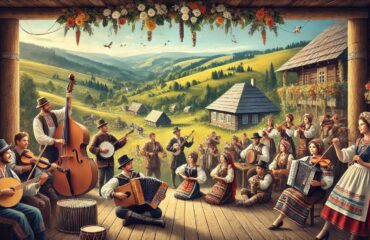Folk music is a form of folk art that has been passed down through generations. To be precise, folk music is only a small part of folklore. This musical genre is often contrasted with popular music (the so-called “pop”), and – despite all the oppositions – it is becoming increasingly popular all over the world.
According to the time of its appearance, we can distinguish between traditional folk music and modern folk music.
Traditional folk music
It originates mostly in rural areas, has long maintained relative independence, and is usually contrasted with popular and academic music belonging to younger, written traditions.
Contemporary folk music
The main themes of folk songs have been and will be the life of the people of a country and politics (simply, the “context”), for example, protest songs, which is why most of these songs are simply forgotten and become a thing of the past.
The features of folk music include:
- lyrical, even somewhat ornamental sound (i.e., this music is not alien to “decoration”)
- the use of recitative (speaking rather than singing the text);
- polyphony;
- an unusual combination of primitive modes with a complex melodic structure;
- frequent use of song forms.
In general, when you hear a song in the folk style, you will not confuse it with any other style.
Folk music inspires musicians to experiment. That’s how many varieties of folk music emerged, for example:
- folk-rock – a mixture of American folk and rock, but often this term means a mixture of any folk and rock;
- folk-pop – a softer, more gentle form of folk-rock, designed for the general population;
- medieval rock is folk rock with medieval melodies and instruments;
- folk-punk – the result of mixing folk and punk, a relatively energetic form of folk rock;
- indie folk – a mixture of folk and indie rock, an experimental form of music that is closer to rock music than folk music;
- progressive folk – a stylistically or thematically complex form of folk music;
- folk-jazz – a mixture of folk and jazz.








